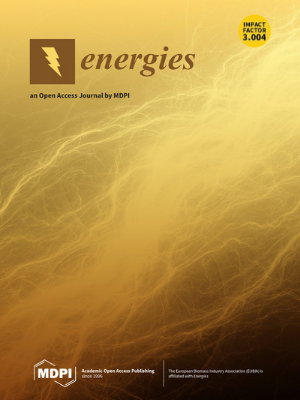Compact Ammonia/Water Absorption Chiller of Different Cycle Configurations: Parametric Analysis Based on Heat Transfer Performance
IF 3
4区 工程技术
Q3 ENERGY & FUELS
引用次数: 3
Abstract
Ammonia/water absorption chillers are driven by low-grade heat and cover wide refrigeration temperatures. This paper analyses single-stage ammonia/water absorption chillers. A numerical model was developed based on the heat exchanger performance. The model captures variational heat exchanger performances and describes the actual cycle with varying boundary conditions. The detrimental effects of refrigerant impurity were analysed quantitatively under different operating conditions. The model was validated with experimental data. A basic cycle and three advanced cycles were analysed for sub-zero refrigeration by comparing the thermodynamic performances. A compression-assisted cycle extended the activation temperature from 80 to 60 °C. At the heat source of 120 °C, when a counter-current desorber or bypassed rich solution was used, the COP increased from 0.51 to 0.58 or 0.57, respectively. The operating parameters included the heat source temperatures, heat sink temperatures, the mass flow rates and mass concentrations of rich solutions. Higher heat source temperatures increase cooling capacity. The increase was around 20 kW for the basic cycle of sub-zero refrigeration. There is an optimum heat source temperature maximising the COP. Higher heat source temperatures increased the refrigerant mass flow rate and reduced the mass concentration. The mass concentration can decrease from 0.999 to 0.960.不同循环配置的紧凑型氨/吸收式制冷机:基于传热性能的参数分析
氨/水吸收式制冷机由低热量驱动,制冷温度范围广。本文分析了单级氨/水吸收式制冷机。基于换热器的性能建立了一个数值模型。该模型捕捉了热交换器性能的变化,并描述了边界条件变化的实际循环。定量分析了制冷剂杂质在不同操作条件下的有害影响。用实验数据对模型进行了验证。通过比较热力学性能,分析了亚零度制冷的一个基本循环和三个高级循环。压缩辅助循环将激活温度从80°C延长至60°C。在120°C的热源下,当使用逆流解吸塔或旁路富溶液时,COP分别从0.51增加到0.58或0.57。操作参数包括热源温度、散热器温度、富溶液的质量流速和质量浓度。热源温度越高,冷却能力越强。零度以下制冷的基本循环的功率增加了约20千瓦。存在使COP最大化的最佳热源温度。较高的热源温度增加了制冷剂的质量流量并降低了质量浓度。质量浓度可从0.999降至0.960。
本文章由计算机程序翻译,如有差异,请以英文原文为准。
求助全文
约1分钟内获得全文
求助全文
来源期刊

Energies
ENERGY & FUELS-
CiteScore
6.20
自引率
21.90%
发文量
8045
审稿时长
1.9 months
期刊介绍:
Energies (ISSN 1996-1073) is an open access journal of related scientific research, technology development and policy and management studies. It publishes reviews, regular research papers, and communications. Our aim is to encourage scientists to publish their experimental and theoretical results in as much detail as possible. There is no restriction on the length of the papers. The full experimental details must be provided so that the results can be reproduced.
 求助内容:
求助内容: 应助结果提醒方式:
应助结果提醒方式:


